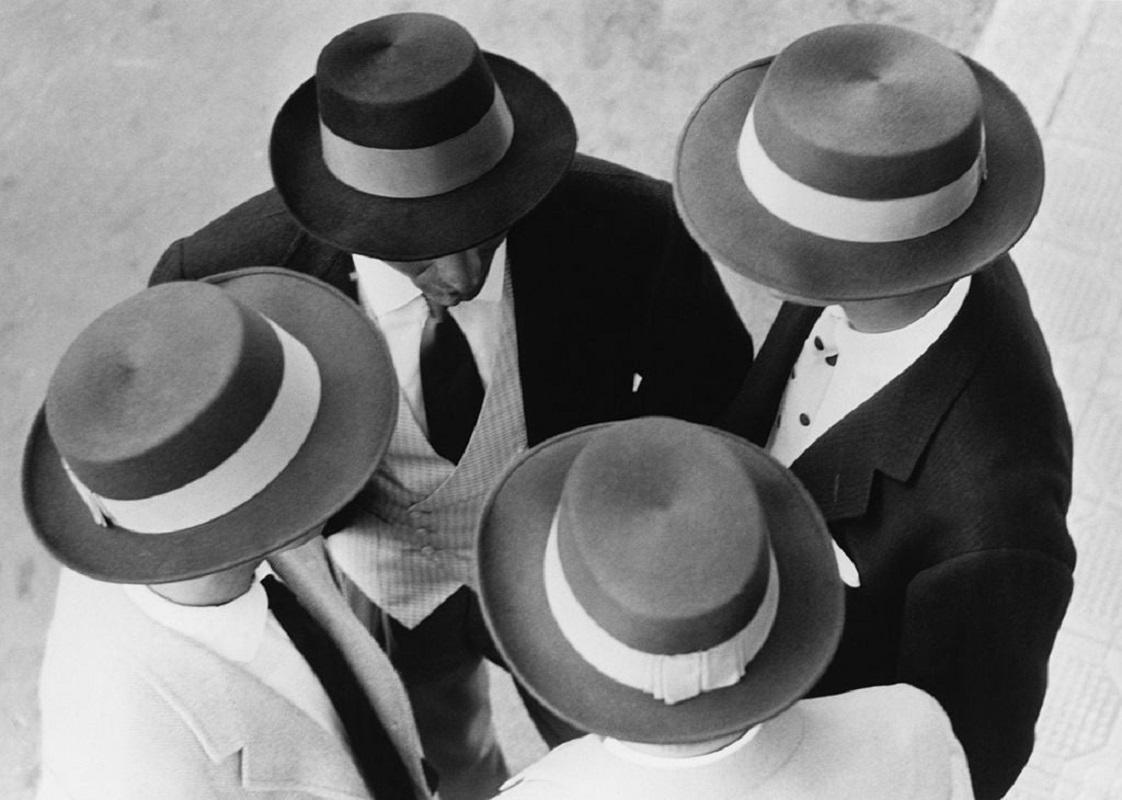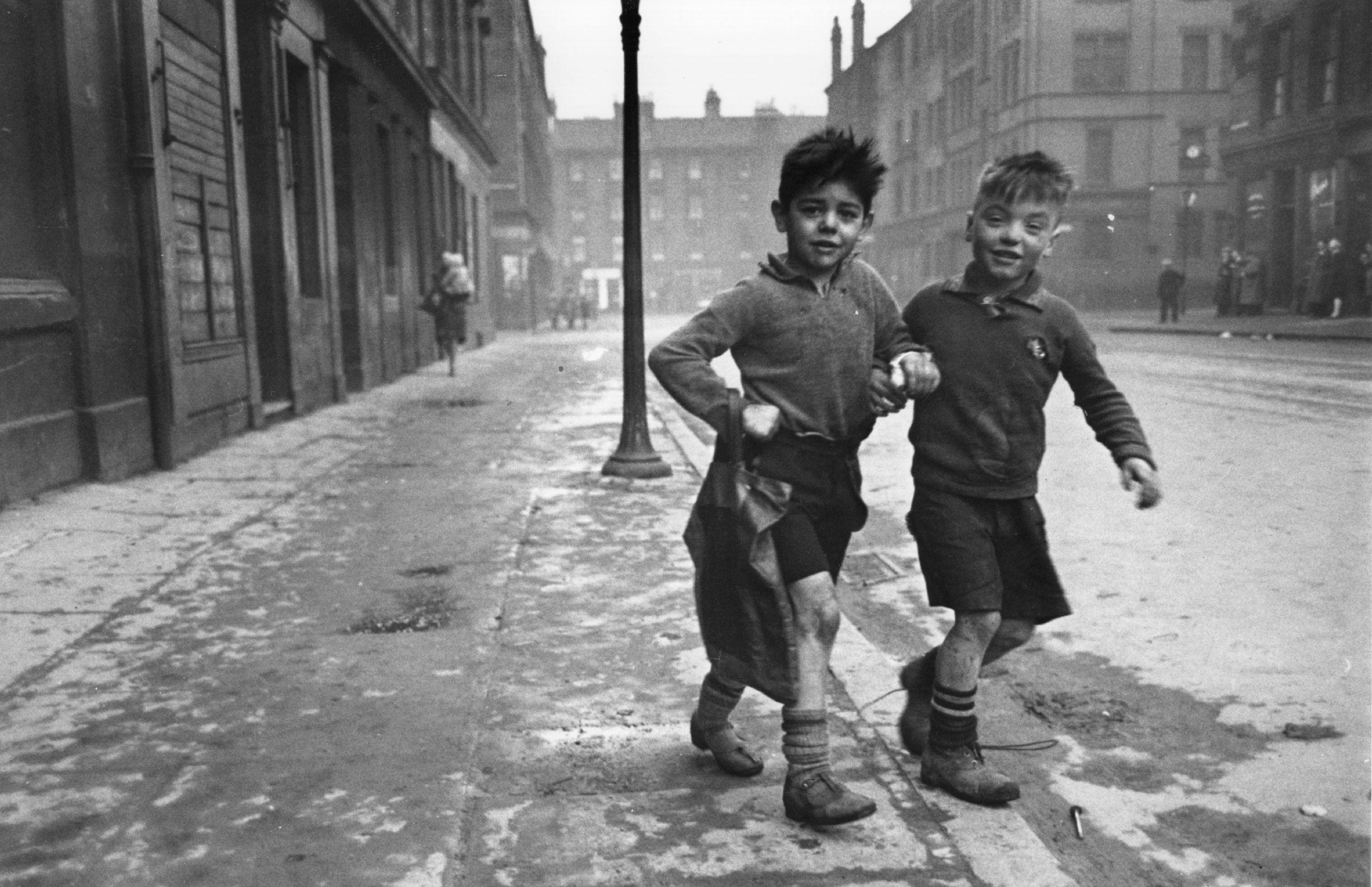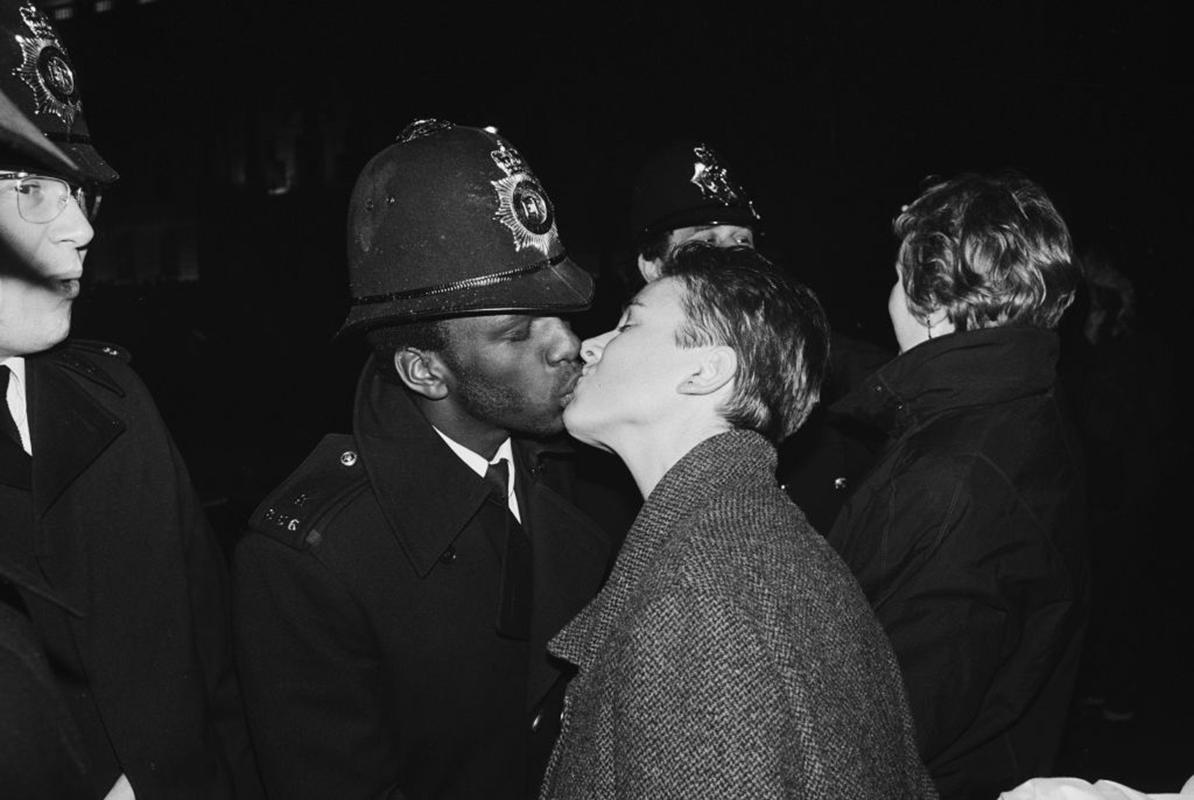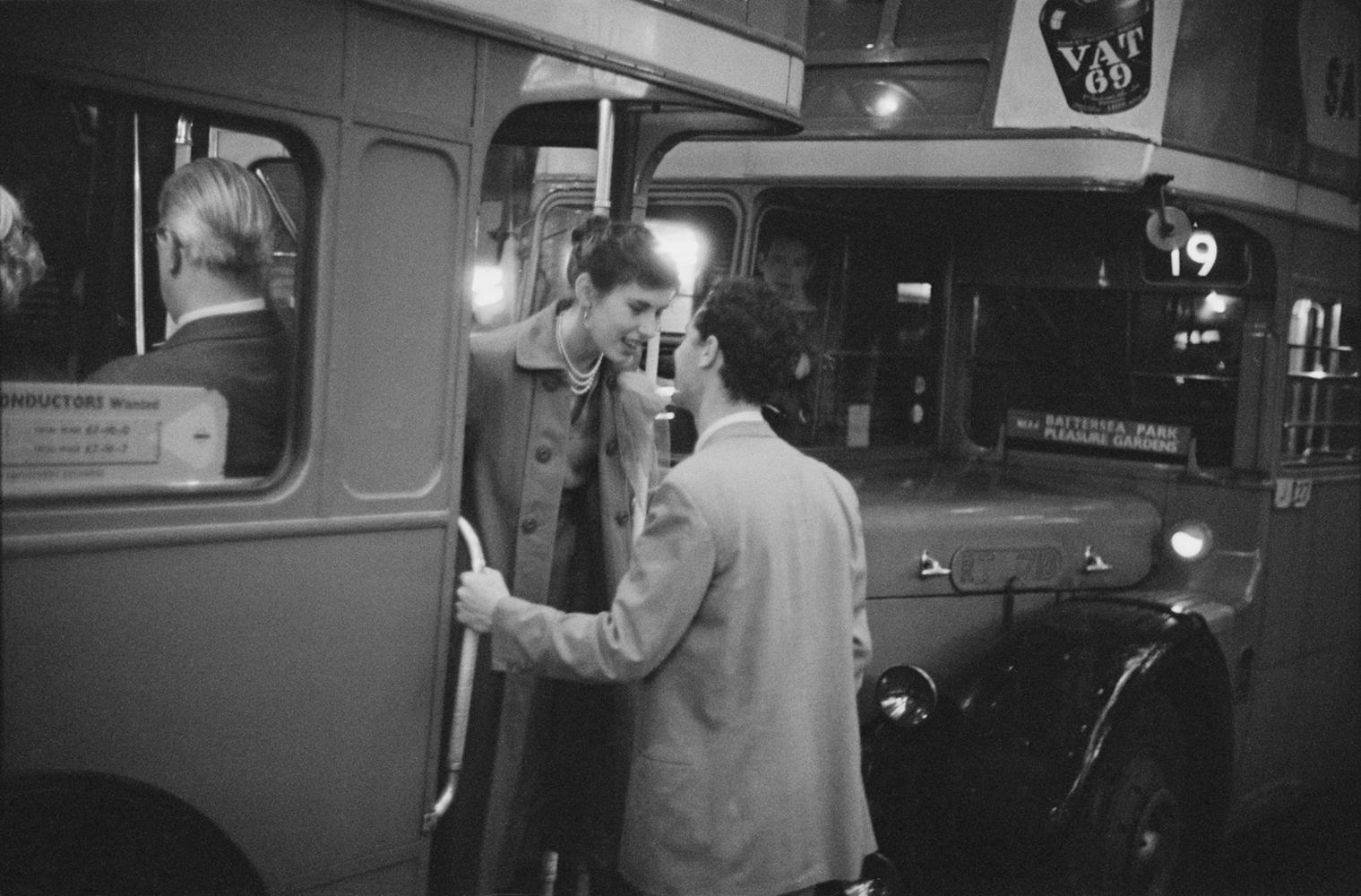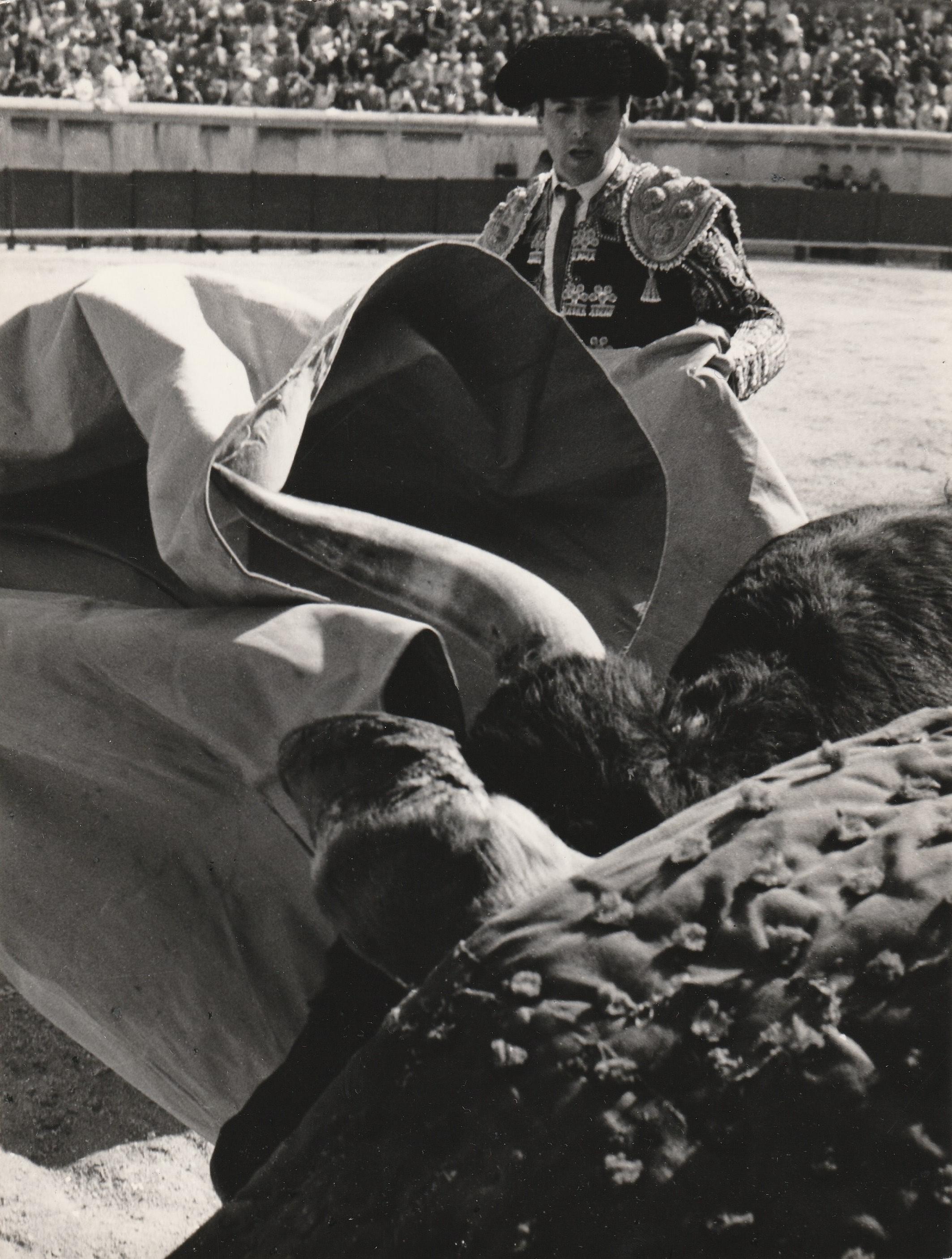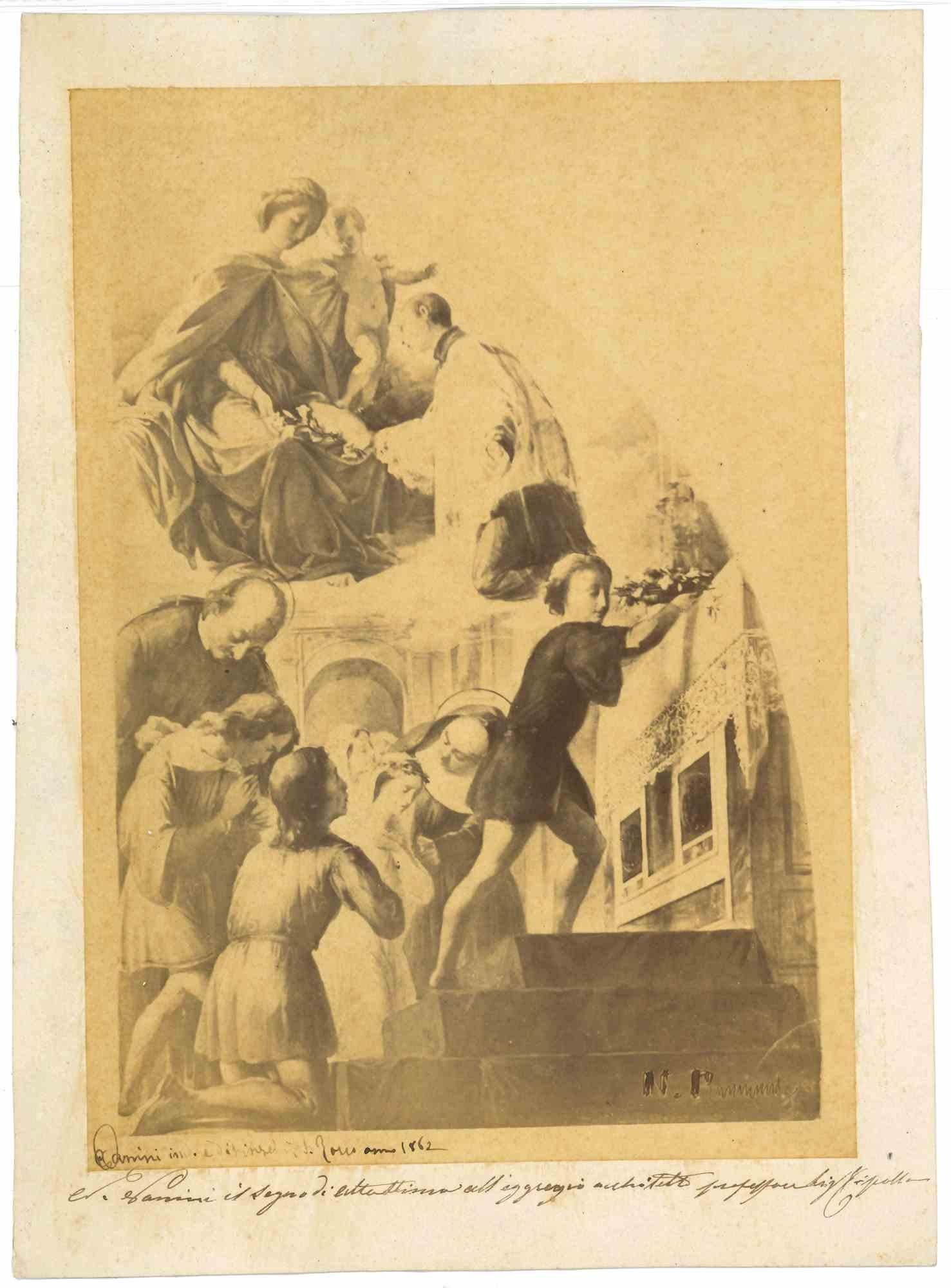Items Similar to Gypsy Rose Lee
Want more images or videos?
Request additional images or videos from the seller
1 of 5
Bruno Bernard (Bernard of Hollywood)Gypsy Rose Leec. 1940's
c. 1940's
About the Item
Gypsy Rose Lee
Vintage sliver print, c. 1940's
Unsigned
Provenance: Gift of Gypsy Rose Lee
Julio de Diego (her husband)
One of a series of photographs that Bruno created of Gypsy raising her skirt and showing her nylons and garters. Bruno created the image that was the cover for Gypsy's autobiography.
Inscribed verso: Gypsy Rose Lee
Condition: Crease into image upper left corner
Bruno Bernard Sommerfeld (February 2, 1912 – June 3, 1987) also known as Bernard of Hollywood, was an American photographer best known for pin-up and glamour photography of Marilyn Monroe and others.
Early life
Bruno Bernard Sommerfeld was born into poverty on February 2, 1912, in Berlin, Germany. He was put in an orphanage by parents who could not afford to support him. In 1923, his parents gave him a Rolleiflex camera, which led to a lifelong interest in photography.
He attended Kiel University, where, in 1934, he earned a doctorate in criminal psychology.] He became the general secretary of a Jewish youth organization, which led to his name appearing on a Gestapo hit list. In 1937, he fled to America from Nazi Germany, claiming to German authorities that he was leaving the country to continue his graduate studies. He attended the University of California, Berkeley, where he planned to continue his education but soon became interested in the arts. In 1940, he became a directorial apprentice at the Reinhardt School of the Theatre, opened by Max Reinhardt on Sunset Boulevard in Los Angeles.
Career in Hollywood
Unable to get a job as a director, Bernard returned to his interest in photography. In 1938 he set up a darkroom in the basement of his Los Angeles apartment. Inspired by his background in psychology, what he learned about directing, and collaboration with Alberto Vargas, Bernard developed a unique portrait style that he called the "posed candid"; a style that evolved into what is now known as "pin-up" photography. Bernard preferred a moderate use of artificial light. He preferred natural light like the sun at the beach and sometimes added a flash to his light concept. He never had any formal training in photography and credited his success to "two good teachers, trial and error".
By 1940, Bernard's basement darkroom had become his first studio. He started out taking photos of the wives and children of the directors and producers he had come to know through his apprenticeship. As he began making money, he opened a proper studio at 9055 Sunset Blvd. As word spread, he soon came to the attention of agents and other Hollywood professionals who sent actresses his way for photo shoots. He became known as "Bernard of Hollywood". Bernard is credited with first photographing Marilyn Monroe at the Racquet Club in Palm Springs, California, in 1947, when she was still Norma Jeane. She is said to have told Bernard, "Remember, Bernie, you started it all".
In the early 1950s, Bernard fought obscenity charges that ended with a case in the U. S. Supreme Court. He submitted as part of his defense a letter from then-General Dwight D. Eisenhower, who was a fan of Bernard's pinup photography. The letter thanks Bernard for the morale-building effect of his pinups during World War II. Bernard's daughter Susan Bernard has made the case that the pinup style popularized by Bernard and his friend Vargas was "celebrating and empowering women rather than exploiting them".
In the 1960s, he moved back to Berlin. He was a photojournalist for the German magazine Der Spiegel for the Eichmann Trial in Israel.
In 1984, Bernard became the first still photographer to be honored by the Academy of Motion Picture Arts and Sciences with a 50-year retrospective of his work. In 1999, his photo "Marilyn in White" of Monroe in her wind-blown dress from the movie The Seven Year Itch (1955) was selected as the "Symbol of the Century" by the Museum of Modern Art in New York. The same photograph was also chosen by the International Center of Photography as one of the "20 Unforgettable Photographs".
In the 1980s Bernard was living in Palm Springs and writing his memoirs. He died of cancer on June 3, 1987, at the age 75 in Los Angeles, California.
Courtesy Wikipedia
- Creator:Bruno Bernard (Bernard of Hollywood) (American)
- Creation Year:c. 1940's
- Dimensions:Height: 10 in (25.4 cm)Width: 8 in (20.32 cm)
- Medium:
- Period:
- Condition:Crease in the upper left corner into image.
- Gallery Location:Fairlawn, OH
- Reference Number:
About the Seller
5.0
Recognized Seller
These prestigious sellers are industry leaders and represent the highest echelon for item quality and design.
Platinum Seller
These expertly vetted sellers are 1stDibs' most experienced sellers and are rated highest by our customers.
Established in 1978
1stDibs seller since 2013
716 sales on 1stDibs
Typical response time: 1 hour
Associations
International Fine Print Dealers Association
- ShippingRetrieving quote...Ships From: Fairlawn, OH
- Return PolicyA return for this item may be initiated within 10 days of delivery.
More From This SellerView All
- New York #121By Jed FieldingLocated in Fairlawn, OHNew York #121 Silver Gelatin print, 1980 Signed in ink below the image (see photo) Annotated verso in pencil: "New York #121 ©, New York, 1980" (see photo) Provenance: Reader's Digest Association Collection #23214 (label) Condition: Excellent Image size: 12-5/8 x 18-3/4" (32 x 47.6 cm.) Mat size: 19-1/2 x 25-1/2" Photographs by Fielding are in the collections of: Museum of Modern Art Brooklyn Museum International Center of Photography (New York) Museum of Contemporary Photography (Chicago) Art Institute of Chicago Walker Art Center (Minneapolis) Center for Creative Photography (Tucson) Fielding was born in Boston, Massachusetts. He attended the Rhode Island School of Design, where he studied with photographers Aaron Siskind and Harry Callahan; he received his BFA in 1975. He received his MFA in 1980 from the School of the Art Institute of Chicago, where he studied with photographer Kenneth Josephson. He has photographed in such countries as Italy, Peru, Spain, Greece, Egypt, Mexico, Portugal and the United States. His work has particularly concentrated on the Italian cities of Rome and Naples, as well as Mexico City. Of Fielding's City of Secrets, critic Vince Aletti wrote: [Naples'] citizens, from wiseass kids in diapers to weathered old men, loom into the frame like characters out of Fellini, bursting with antic, earthy energy. Fielding confronts and embraces his subjects, building up a portrait of a place that's as visceral as it is cinematic--a true theatre of the streets. Photography curator and collector W. M. Hunt wrote about the book: Jed Fielding is from the old school: a photographer with vision and technique. I've been to Naples twice in my lifetime; once by ship, and, even more lastingly, through Jed Fielding's astonishing images. At the time of a 2009 New York City exhibition of Fielding's photographs from Look at me, a New Yorker review[who?] said: Fielding's photographs of the blind children he met at schools in Mexico City are not in the tradition of photojournalistic muckraking. Like his terrific earlier series from the streets of Naples, these images are vivacious, audacious, and in your face. His subjects are not pitiable victims; they're rambunctious, apparently happy kids at play, responding to Fielding's attention with curiosity and delight. They may be cut off from the visual world, but they relish physical contact, both with one another and with the patient photographer. The best of the work was made at close range, where that connection was most tangible, and young faces fill the frames with fragile, vivid life. He has had solo exhibitions at venues including the Andrea Meislin Gallery...Category
1980s American Modern Figurative Photography
MaterialsSilver Gelatin
- Marilyn Monroe, Glass Balanced on Left KneeBy Milton GreeneLocated in Fairlawn, OHFrom: The Black Sitting, 1956 Original silver print photograph taken the the photographers studio in New York in 1956. Hand signed in ink within the photographers stamp verso. Pri...Category
1950s American Modern Figurative Photography
MaterialsSilver Gelatin
- Untitled (Portrait of Roberta Kimmel Cohn)By Naomi SavageLocated in Fairlawn, OHUntitled (Portrait of Roberta Kimmel Cohn) Silver gelatin print on photographic paper c. 1981 Signed with the photographer's hand stamp verso From a presentation portfolio given the ...Category
1980s Surrealist Figurative Photography
MaterialsPhotographic Paper
- Eroded Rock, Point LobosBy Edward WestonLocated in Fairlawn, OHEroded Rock, Point Lobos Gelatin silver print, 1929 Unsigned Signed with the estate stamp verso (see photo) A lifetime printing by Brett Weston, supervised by his father Edward Edition: 5 or 6 prints (see ttext below) Weston negative Numbered verso: "1357" photographer's estate stamp, verso LITERATURE: A. Conger, Edward Weston: Photographs from the Collection of the Center for Creative Photography, The Center for Creative Photography, 1992, fig. 576. Label: The Photographs of Edward Weston/Arizona Board of Regents label affixed to paper folder. Edward Weston description of printing in 1953-54 In 1945 Edward Weston began to experience the first symptoms of Parkinson's disease, which slowly progressed until by 1948, he took his last photograph. By the second half of 1952, Weston decided he should select a master set of his best work. Out of his approximately 3000 negatives, he would pick 1000 and have Brett Weston print...Category
1920s Abstract Abstract Photography
MaterialsSilver Gelatin
- Juniper, Lake TenayaBy Edward WestonLocated in Fairlawn, OHJuniper, Lake Tenaya Gelatin silver print, 1937 Unsigned Edward Weston Estate stamp verso (see photo) A lifetime printing by Brett Weston, supervised by his father Edward, printed in...Category
1930s American Modern Landscape Photography
MaterialsSilver Gelatin
- Stone Church Window Glendalough, Wicklow, IrelandBy Paul CaponigroLocated in Fairlawn, OHEntrance, Reefert Chuch, Ireland Silver gelatin Print, 1989 Signed in pencil lower right on mount (see photo) From: Stone Churches of Ireland, published by Lodima Press, Volume 9 Ima...Category
1980s American Modern Landscape Photography
MaterialsSilver Gelatin
You May Also Like
- Italian Hats by Hulton ArchiveLocated in London, GB"Italian Hats" by Hulton Archive Models wearing a collection of Italian designed hats for winter 1956/7 and spring 1957, at the fifth Men's Fashion Festival, San Remo, Italy. Unfra...Category
1950s Modern Black and White Photography
MaterialsBlack and White, Silver Gelatin
- Bert Hardy Gorbals Boys 1948 - Silver Gelatin Fibre PrintBy Bert HardyLocated in London, GBGorbals Boys (1948) - Silver Gelatin Fibre Print (Photo by Bert Hardy/Getty Images Archive London) Possibly Bert Hardy's most famous image. Two boys in the Gorbals area of Glasgow. The Gorbals tenements were built quickly and cheaply in the 1840s, providing housing for Glasgow's burgeoning population of industrial workers. Conditions were appalling; overcrowding was standard and sewage and water facilities inadequate. The tenements housed about 40,000 people with up to eight family members sharing a single room, 30 residents sharing a toilet and 40 sharing a tap. By the time this photograph was taken 850 tenements had been demolished since 1920. Redevelopment of the area began in the late 1950s and the tenements were replaced with a modern tower block complex in the sixties. Original Publication: Picture Post - 4499 - The Forgotten Gorbals - pub. 1948 Additional Information: Unframed Paper Size: 20 x 16'' inches / 51 x 41 cm Printed 2024 Silver Gelatin Fibre Print Limited edition issued and stamped on front by the Getty Archive London Edition size 300 only NOTE OTHER SIZES OF THIS IMAGE AVAILABLE 10 x 8'' 10 x 12'' 12 x 16'' 16 x 20'' 20 x 24'' FRAMING AVAILABLE ON REQUEST Bert Hardy Albert William Thomas Hardy (19 May 1913 – 3 July 1995) was an English documentary and press photographer known for his work published in the Picture Post magazine between 1941 and 1957. Life and work Born in Blackfriars, Bert Hardy rose from humble working class origins in Southwark, London. The eldest of seven children, he left school at age 14 to work for a chemist who also processed photos. His first big sale came in 1936 when he photographed King George V and Queen Mary in a passing carriage during the Silver Jubilee celebrations, and sold 200 small prints of his best view of the King. His first assignment, at age 23, was to photograph Hungarian actor Sakall at the Mayfair Hotel. Hardy freelanced for The Bicycle magazine, and bought his first small-format 35 mm Leica. He signed on with the General Photographic Agency as a Leica photographer, later founding his own freelance firm, Criterion. General Photographic Agency General Photographic Agency a Fleet Street, London agency, sold photos at least between 1880-1950. Picture Post and World War II In 1941, Hardy was recruited by the then editor Tom Hopkinson of the leading picture publication of the 1930s to the 1950s, Picture Post. Founded in 1938 and funded by publisher Edward Hulton, the magazine's first editor was Hungarian émigré Stefan Lorant (1901–97) assisted by Hopkinson, who took over as editor from 1940. The picture-centric, left-leaning and reasonably-priced publication was highly successful and circulation soon rose to over a million. Hardy's photographer colleagues included Felix H. Man (aka Hans Baumann...Category
1940s Modern Figurative Photography
MaterialsBlack and White, Silver Gelatin
- New Year's KissLocated in London, GBA police officer kissing a young woman, who is wearing an overcoat, during the New Year celebrations in Trafalgar Square, London, England, 1st January 1985. (Photo by Dunsmore/Dail...Category
1980s Figurative Photography
MaterialsSilver Gelatin
- Last Bus In London by Bert Hardy - Limited Edition silver gelatine printBy Bert HardyLocated in London, GBLast Bus In London by Bert Hardy Limited Edition silver gelatine print A couple saying goodbye on a bus in Shaftesbury Avenue in London, July 1953 . Original Publication: Picture Post - 6576 - Known Your Piccadilly - pub. 4th July 1953 (Photo by Bert Hardy/Picture Post/Hulton Archive/Getty Images Archive London England) Paper size 12x16 inches / 31 x 41 cm Produced utilising the original negative Numbered and stamped by the Getty Archive London Limited edition to 300 only Silver gelatine fibre based baryta paper print Certificate of authenticity included printed 2024 Ships securely from London. Other sizes and Framing available on request. Bert Hardy Bert Hardy Albert William Thomas Hardy (19 May 1913 – 3 July 1995) was an English documentary and press photographer known for his work published in the Picture Post magazine between 1941 and 1957. Life and work Born in Blackfriars, Bert Hardy rose from humble working class origins in Southwark, London. The eldest of seven children, he left school at age 14 to work for a chemist who also processed photos. His first big sale came in 1936 when he photographed King George V and Queen Mary in a passing carriage during the Silver Jubilee celebrations, and sold 200 small prints of his best view of the King. His first assignment, at age 23, was to photograph Hungarian actor Sakall at the Mayfair Hotel. Hardy freelanced for The Bicycle magazine, and bought his first small-format 35 mm Leica. He signed on with the General Photographic Agency as a Leica photographer, later founding his own freelance firm, Criterion. General Photographic Agency General Photographic Agency a Fleet Street, London agency, sold photos at least between 1880-1950. Picture Post and World War II In 1941, Hardy was recruited by the then editor Tom Hopkinson of the leading picture publication of the 1930s to the 1950s, Picture Post. Founded in 1938 and funded by publisher Edward Hulton, the magazine's first editor was Hungarian émigré Stefan Lorant (1901–97) assisted by Hopkinson, who took over as editor from 1940. The picture-centric, left-leaning and reasonably-priced publication was highly successful and circulation soon rose to over a million. Hardy's photographer colleagues included Felix H. Man (aka Hans Baumann...Category
1950s Modern Figurative Photography
MaterialsSilver Gelatin
- Chute de Picador, BéziersBy Lucien ClergueLocated in New York, NYThis original silver gelatin print by Lucien Clergue, printed by the photographer in 1961, this original photograph is hand-signed, titled, dated, and stamped by the photographer’s s...Category
20th Century Black and White Photography
MaterialsSilver Gelatin
- Children and Madonna - Photograph - 1862Located in Roma, ITChildren and Madonna is a Photograph silver salt print, realized in 1862. Hand-dedication on the lower. Good conditions.Category
1860s Modern Figurative Photography
MaterialsPaper, Silver Gelatin
Recently Viewed
View AllMore Ways To Browse
Rose Photo
Hollywood Style Art
Vintage Hollywood Photography
Vintage Hollywood Photographs
Dior Rose
3d Rose
Good Art Hollywood
War Of The Roses
Hollywood Movie
Vintage Lee Prints
Los Angeles Hollywood Photograph
Hollywood Actress
Vintage Flash Art
1940s Vintage Photography
Silver Rose Pin
Background Vintage Roses
Rose Vintage Pin
1940s Berlin
